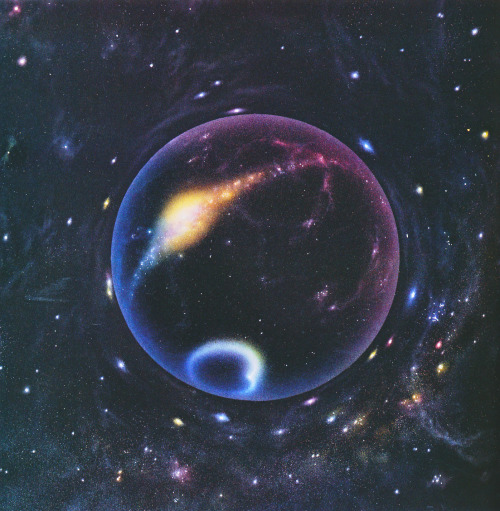andromedasbitch-blog
Astro and Modern Physics•Photography•Art
51 posts
Latest Posts by andromedasbitch-blog

For more of the greatest collection of #Nebula in the Universe, visit http://nebulaimages.com/

Fashion photo by Gordon Parks, New York, 1950





1960’s(USA) Color Photography

John Lennon “bed in” Amsterdam 1969 Photo by Mark and Colleen Hayward

1967 - Teen Dance Party

brigitte bardot, 1960s


Tyler Joseph and Josh Dun playing hide and seek

1946 inflation in Hungary.
“I liked them before they were famous”


Steampunk Art

Stars come in all shapes, colors and SIZES!
https://www.youtube.com/watch?v=HEheh1BH34Q
http://www.sbau.org/planets.htm
http://commons.wikimedia.org/wiki/File:Star_Chart.jpg

I was convinced these were mountains on Joy Division’s cover. *you learn something new every day*


Death and Rebirth
On July 4, 1054 A.D, a bright new star appeared in the sky. Although it was 6,500 light-years away from Earth, it shone brighter than whole galaxies and was visible in daylight for 23 days. Little did the astronomers of the day know, the “new” star was actually the violent death of an old star: a supernova explosion. Stars more than ten times the mass of our sun will eventually become supernovas when they die. For their whole lives, they battle to balance energy trying to get out and gravity trying to crush them in under their own weight—but when they run out of fuel to burn, gravity wins. The star’s core collapses and its very atoms are crushed, emitting an enormous shockwave that flings heavy elements out into space. The remnants of this particular supernova formed the enigmatic Crab Nebula, an energetic cloud spanning five light-years, with each different colour representing different chemicals: orange is hydrogen, red is nitrogen, green is oxygen… And at the centre of the nebula lies the remnant of the exploded star. Gravity has squashed all the empty space out of it, leaving an incredibly dense object called a neutron star—just 20 km across, but with the mass of our sun, so on Earth, one teaspoonful would weigh one billion tons. Rotating neutron stars are known as pulsars, and this one spins at a rate of 30 times per second, sending out violent jets of particles at nearly the speed of light.
(Image Credit: 1, 2)

It’s Red, White and Blue stars month!
This week’s entry: Life of a star Part 2
http://www.schoolsobservatory.org.uk/astro/stars/lifecycle

Astronomers Found a Star Inside a Star, 40 Years After It Was First Theorized

What is a gamma-ray burst?
Gamma-ray bursts (GRBs) are flashes of gamma rays associated with extremely energetic explosions that have been observed in distant galaxies. They are the brightest electromagnetic events known to occur in the universe. Bursts can last from ten milliseconds to several minutes. The initial burst is usually followed by a longer-lived “afterglow” emitted at longer wavelengths (X-ray, ultraviolet, optical, infrared, microwave and radio).
Most observed GRBs are believed to consist of a narrow beam of intense radiation released during a supernova or hypernova as a rapidly rotating, high-mass star collapses to form a neutron star, quark star, or black hole. A subclass of GRBs (the “short” bursts) appear to originate from a different process - this may be due to the merger of binaryneutron stars. The cause of the precursor burst observed in some of these short events may be due to the development of a resonance between the crust and core of such stars as a result of the massive tidal forces experienced in the seconds leading up to their collision, causing the entire crust of the star to shatter.
Gamma-ray bursts are thought to be highly focused explosions, with most of the explosion energy collimated into a narrow jet traveling at speeds exceeding 99.995% of the speed of light. The approximate angular width of the jet (that is, the degree of spread of the beam) can be estimated directly by observing the achromatic “jet breaks” in afterglow light curves: a time after which the slowly decaying afterglow begins to fade rapidly as the jet slows and can no longer beam its radiation as effectively
Image credit: NASA/Swift/Cruz deWilde



Stellar Evolution: How Stars Die
Depending on their mass, stars follow one of three evolutionary routes. When they end their lives they may become white dwarves, neutron stars, or black holes.
All stars fuse hydrogen into helium at their core, releasing energy that balances the force of gravity that pulls inwards. Helium is denser than hydrogen, so as it is created, it makes the star’s core hotter and more pressurised. Eventually, the temperature is high enough to fuse the hydrogen around the core, and as fusion reactions happen faster and faster, the force released pushes away the outer layers of the star. Since the star’s radius increases, its energy radiates away over a larger surface area and it emits cooler red light. The star is now a red giant. When it reaches temperatures of 100 million Kelvin and begins to fuse helium into carbon and oxygen, it may take three paths depending on its initial mass.
In light stars like our sun, all their fuel will have run out before temperatures get hot enough to fuse carbon and oxygen into heavier elements. All the excess gas and dust is blown off by stellar wind, forming a planetary nebula, and eventually the star simply becomes a hot, dense carbon and oxygen core: a white dwarf. To take this evolutionary route, a star must be less than 1.4 times the mass of our own Sun, otherwise known as the “Chandrasekhar Limit”. When a star stops producing energy, the only thing stopping gravity from collapsing the star is electron degeneracy pressure: when electrons are squeezed together, they repel each other, thus resisting gravitational collapse.
A star more massive than the Chandrasekhar Limit will collapse even further. As a red giant, its temperatures will become high enough to fuse oxygen and carbon into heavier elements. Fusion continues on and on until iron is created—and since fusing iron uses up energy instead of creating it, fusion stops. Electron degeneracy pressure is the only thing stopping the star from collapsing, and then that gives in too. Electrons are squeezed into the nucleus of the atom, protons turn into neutrons, and the core of the star is soon just a super dense ball of neutrons. An enormous amount of energy is released in the collapse—material hurtles down towards the core and bounces off, creating an immense shockwave that blasts away the rest of the star in a supernova. It’s so bright and energetic that it can temporarily outshine an entire galaxy, and can fuse even heavier elements, like uranium and gold. After the explosion, all that’s left is a neutron star: a stellar corpse 1.5 to 3 times the mass of the sun, but compressed to the size of a city in Earth (30 km in diameter).
But if the original star is more than 20 times the mass of our sun, something even wackier will form at the end of its life: a black hole. It goes from red giant to supernova to neutron star—but it doesn’t stop collapsing. Instead of forming a ball of neutrons, the star’s mass is so great that it collapses down and down to a point so small it must have infinite density. This is called a singularity. To quote Sir Roger Penrose, ‘Thou shalt not have naked singularities’, meaning that they cannot exist with an accompanying event horizon. Anything that crosses beyond this horizon can’t escape the immense gravitational pull of the singularity, not even light. Together, a singularity and its event horizon form a stellar mass black hole.
Denser and denser and denser, the corpse of a star and the grave in which is rests depends largely on its mass. These are the endpoints of stellar evolution, and will be the eventual fate of every point of light we see when we look up.
(Image Credit: Wikimedia Commons and Universe Today)

Here’s something for you to start the week off with a bang. This is a computer simulation of a supernova event, the moments when a massive star collapses in on itself to evolve into a neutron star. The violent and knobbly shock wave from the collapse expands out in a fraction of a second, with the coldest gas in the model colored blue and the hottest colored red. Ejected stellar material moves away from the core at speeds that can reach almost 19,000 miles per second.
The simulation was created in 2012 by the Simulating eXtreme Spacetimes (SXS) Project. Now, direct observations of a supernova called 1987A using NASA’s Nuclear Spectroscopic Telescope Array has confirmed a detail found in the model–that the collapse leads to a lopsided ejection of debris in one direction and the stellar core into another.
Read more from Caltech about how models predicted that perfectly spherical star cores evolve into asymmetric blobs with plumes of broiling hot gasses powered by neutrino emissions.

(Hubble Space Telescope captured supernova 1987A with a bright ring of material ejected from the dying star before it detonated. The ring is being lit up by the explosion’s shock wave.Credit: ESA/Hubble & NASA.)
Keep reading

Neutron Star by Adolf Schaller from the book Extraterrestrials (1994)



This is the fourth week of Red, White and Blue Stars Month!
This week’s entry: Types of Stars
http://typeslist.com/different-types-of-stars/

The Milky Way from Yosemite, CA
js

js



631 Exposures Blended - Cloverdale, CA
js
